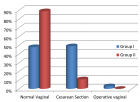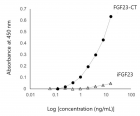Early Online (Volume - 8 | Issue - 2)
New Discovery of a Rare Robertsonian Translocation (15;22) - A Case Report from India
Published on: 1st May, 2024
The rob(15;22) is one of the rarest translocations which accounts for only 0.6% of the entire Robertsonian translocations reported in humans. A case of rob(15;22) in association with trisomy 21 still has not been reported. In the present study, a case of a 3-year 6-month-old male child with rob(15;22) with trisomy 21 is focused. The phenotype comprises generalized hypotonia, delayed developmental milestones, simian crease, dysmorphic facies, etc. Chromosome analysis with peripheral blood was executed and the karyotype was interpreted as 46,XY,der(15;22)(q10;q10)+21. To analyse whether the chromosomal translocation was de-novo or inherited, the chromosome analysis with the peripheral blood of his parents was performed. The karyotype of the father was interpreted as 46,XY, and of the mother was 45,XX,der(15;22). It was concluded that the rob(15;22) was inherited from his mother, although trisomy 21 was a de novo incidence. Hence, this case study can be proven useful in the understanding of rob(15;22) in solo and rob(15;22) in association with trisomy 21.
Bladder Benign Inverted Papilloma in Young Men: A Case Report
Published on: 13th May, 2024
An inverted papilloma of the urinary tract is a rare benign lesion. A 35-year-old male presented gross hematuria. Cystoscopy showed one, papillary tumor at the bladder trigone. Transurethral resection was done, and histological examination has concluded in the diagnosis of inverted papilloma. Following resection, the patient was asymptomatic with no hematuria and no recurrence after a five-year cystoscopy control. We report a case of bladder Inverted papilloma and we aim to remind the clinical, histological, and therapeutic features of this rare tumor.
Custom Implants and Beyond: The Biomedical Potential of Additive Manufacturing
Published on: 17th May, 2024
Additive manufacturing, commonly known as 3D printing, is revolutionizing the field of biomedical engineering by enabling the creation of custom implants tailored to individual patient anatomy. This technology uses digital design files to layer-by-layer build structures from various materials, including biocompatible metals, polymers, and ceramics. In medical applications, this precision allows for the creation of implants that closely match the contours and geometries of a patient’s unique anatomical features, offering improved fit, functionality, and comfort compared to traditional, mass-produced implants. The potential benefits extend beyond just enhanced patient outcomes. With additive manufacturing, healthcare providers can reduce surgical times by designing implants that require minimal intraoperative modification. Moreover, the flexibility of this technology facilitates rapid prototyping and iterative design, enabling healthcare professionals to collaborate with engineers in refining implant designs before they are used in surgery. This iterative approach is particularly useful in complex cases, such as craniofacial reconstruction, where conventional implants may not adequately address the intricacies of a patient’s skeletal structure.
Transformative Convergence: Exploring the Nexus of Engineering, Science and Technology in Intensive Care
Published on: 23rd May, 2024
In the last decade, convergence science has been described as the solution to problems by integrating biological sciences with the physical, mathematical and computational sciences. This concurrence opens the pitch to strengthen multidisciplinary, transdisciplinary and interdisciplinary work. This short review delves into the transformative integration of engineering, science and technology in the dynamic realm of intensive care. Unveiling recent advancements, the exploration spans the multifaceted contributions of these disciplines toward elevating patient care and optimizing healthcare systems.
Bicytopenia Revealing an Intramedullary Spinal Cord Metastatic Prostatic Carcinoma
Published on: 30th May, 2024
Usually revealed by lower urinary tract symptoms, prostate neoplasms are the most frequent urological cancer.The patient was a 70-year-old man being explored for bicytopenia in the hematology department: anemia and bicytopenia with no urinary symptoms in the first plan.Bone marrow biopsy was done and the histological and immunohistochemical concluded in an intramedullary spinal cord metastasis of an undifferentiated prostatic carcinoma.We have reviewed the literature one other case of intramedullary metastasis of prostatic cancer was detected but the main symptoms were neurological and the patient was already diagnosed with his cancer.
A Life-threatening Case of Giant Bilateral Renal Angiomyolipoma: A Case Report
Published on: 18th June, 2024
Renal angiomyolipoma (AML) is a rare tumor with an incidence of 0.3% - 3%.We reported a case of a 41-year-old male patient who presented with gross hematuria and hemorrhagic shock, due to a right giant angiomyolipoma he underwent urgent right nephrectomy by subcostal laparotomy, total weight of the mass was 6 Kg, histological examination concluded in a renal angiomyolipoma.Treatment of renal AML depends on the clinical presentation, tumor size, and single or multiple lesions: single small (< 4 cm) asymptomatic lesions require only clinical and radiological follow-up, however giant symptomatic (hematuria), life-threatening masses require urgent multidisciplinary treatment and especially surgery.Giant renal bilateral AML is very rare, conservative treatment in the absence of hemorrhage should always be first proposed to preserve renal function as possible.

HSPI: We're glad you're here. Please click "create a new Query" if you are a new visitor to our website and need further information from us.
If you are already a member of our network and need to keep track of any developments regarding a question you have already submitted, click "take me to my Query."
























































































































































